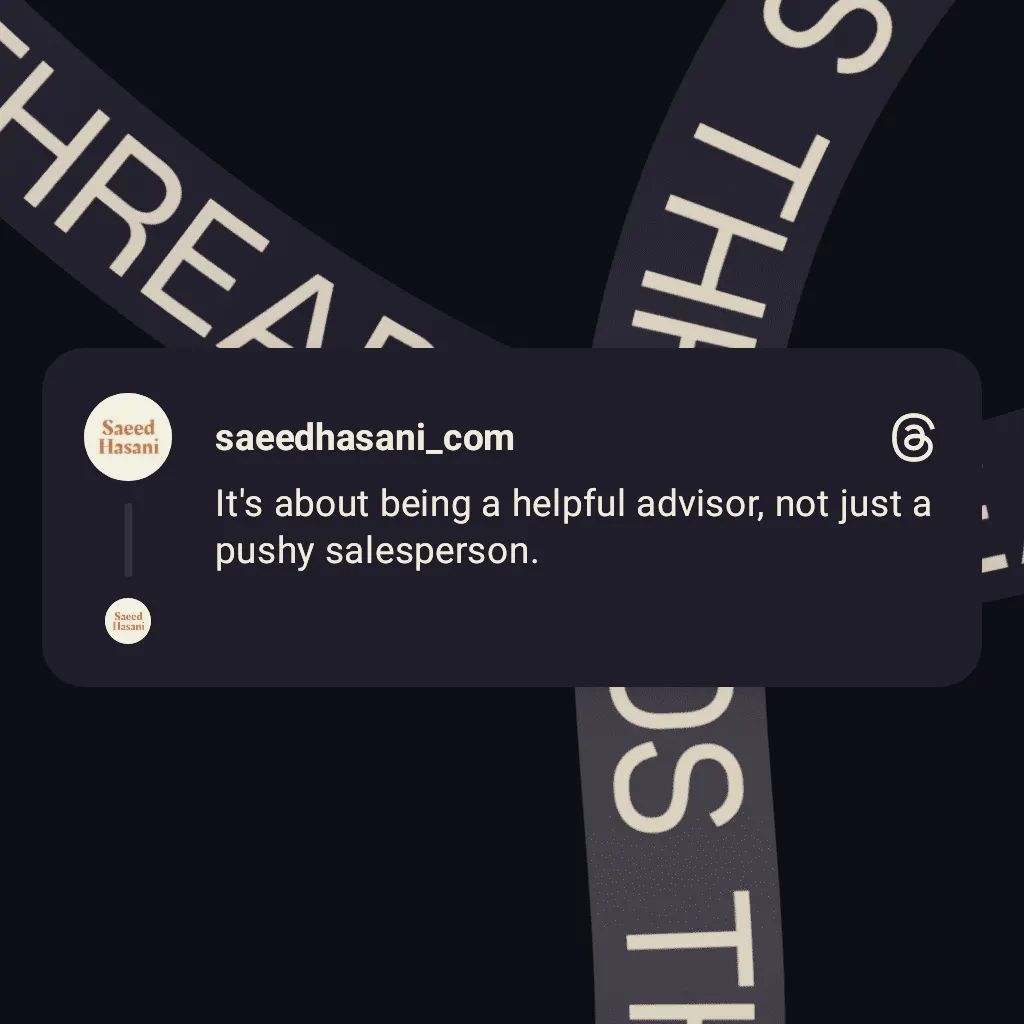Are you struggling with lead generation strategies, finding it challenging to acquire new customers and drive business growth? Are you tired of investing time and money into ineffective marketing strategies that yield no results?
Don’t worry! You’re not alone if you’re feeling that way. Loads of business folks and marketers struggle with lead generation, which basically means getting people interested in what you’re selling and turning them into paying customers. So, don’t sweat it!
In this course, you’re going to find out how to generate excellent quality leads that are more likely to turn into customers by using effective strategies and techniques.
No matter if you’re a small business owner, marketer, or salesperson, you’ll get helpful tips and tricks that will take your lead generation game to the next level.
You’ll learn a lot more too! During this course, you’ll figure out how to find your perfect customer, make terrific lead magnets, improve your landing pages, create engaging social media campaigns, make your website more visible in search engines, and tons more.
You’ll also figure out how to check and improve your lead generation strategy so you’re getting the most bang for your buck.
Do you ready for an awesome course? Don’t rush. Start with simple questions:
What are lead generation strategies?
Lead generation strategies are crucial moves that businesses make to hook the attention of potential customers and transform them into solid leads. Various techniques and tools are available to generate leads that can help a business expand its customer base and increase sales revenue.
There are numerous lead generation tactics. Some of the most prevalent ones are content and blog marketing, email marketing, PPC advertising, social media marketing, SEO, referral marketing, event marketing, lead magnets, influencer marketing, and webinars.
These approaches are implemented to attract potential customers and transform them into leads, which can contribute to the growth of the customer base and increase sales revenue.
What strategies would you use to generate leads?
You’ve got plenty of options to snag leads for your business, and the trick to finding the right ones is to consider the type of business you’re running and the folks you want to attract.
In this free course, we’ve got tons of cool strategies that can help you find more potential customers, depending on what kind of business you’re in and who you’re trying to reach. So come on over and check it out:
- Content Marketing
- Social Media Marketing
- Search Engine Optimization (SEO)
- Pay-Per-Click (PPC) Advertising
- Networking
- Referral Programs.
- And much more.
Just a quick tip:
If you wanna score leads like a boss, it’s mega crucial to have the lowdown on your target audience and what floats their boat. That way, you can create killer strategies that really speak to their interests and needs. So, remember that, and you’ll become a total lead generation wizard before you know it!
How to create a lead generation strategy?
To generate more sales, you need to identify your target audience, select the right lead generation tactics, and establish a system for tracking and following up with leads. This involves figuring out who wants your product or service, choosing the best ways to reach them, and keeping track of them so you can follow up later. It’s important to continuously optimize your strategy and comply with relevant laws and regulations. Here are some steps to get started:
- Define your target audience.
- Develop your value proposition.
- Choose your lead generation tactics.
- Create a lead magnet.
- Track and follow up with leads.
- Measure and optimize your strategy.
Making a plan to get more customers needs you to really know who your customers are, make an excellent reason for them to buy from you, pick the best ways to reach them, track them and follow up, and always try to make it better.
What are some recent emerging trends in lead generation?
These emerging trends reflect the evolving landscape of lead generation and present opportunities for businesses to stay ahead of the curve and attract high-quality leads! Here are some recent emerging trends in lead generation:
- Interactive Content: Interactive content, such as quizzes, assessments, calculators, and interactive videos, is gaining popularity as it engages users and encourages active participation, resulting in higher lead generation.
- Influencer Marketing: Collaborating with influencers who have a strong online presence and a relevant audience can help businesses reach new prospects and generate leads through endorsements, sponsored content, or partnerships.
- Chatbots and AI-powered Assistants: AI chatbots and virtual assistants are being used to provide instant customer support, answer queries, and collect lead information, thereby streamlining lead generation processes and enhancing user experience.
- Voice Search Optimization: With the rise of voice assistants like Amazon Alexa and Google Assistant, optimizing content for voice search queries has become crucial for lead generation, requiring businesses to adapt their SEO strategies accordingly.
- Account-Based Marketing: ABM focuses on targeting specific high-value accounts with personalized campaigns, content, and messaging, allowing businesses to generate leads from key decision-makers within those accounts.
- Video Marketing: Video content continues to be a dominant trend in lead generation. Creating engaging videos, such as product demos, tutorials, or customer testimonials, can capture audience attention and drive conversions.
- Social Media Lead Generation: Social media platforms are evolving as lead generation channels, with features like lead generation forms, chatbots, and advanced targeting options, enabling businesses to reach their target audience directly.
- Personalization and Hyper-segmentation: Tailoring marketing messages and offers to specific audience segments based on their preferences, behaviors, and demographics helps businesses generate more qualified leads and build stronger relationships.
- Data-driven Insights: Leveraging data analytics, businesses can gather insights into customer behavior, preferences, and buying patterns, enabling them to optimize lead generation strategies and improve conversion rates.
What role does personalization play in modern lead generation techniques?
Personalization plays a huge role in modern lead generation techniques. Nowadays, there’s so much information bombarding consumers, and businesses need to stand out. That’s where personalization comes in. It’s all about creating a customized experience and tailoring content to each potential lead.
First off, personalization improves the user experience. By giving people content that matches their preferences and interests, businesses make their websites more engaging and keep visitors around longer. And when people stick around, there’s a better chance they’ll become leads.
Personalization also lets businesses send targeted messages. Instead of blasting everyone with the same generic stuff, businesses can tailor their messages based on things like demographics, interests, and behavior. That way, they’re speaking directly to each lead’s needs and offering solutions that resonate with them.
When leads see personalized content and offers that speak to their interests, they’re more likely to engage and take action. That means higher conversion rates. By customizing landing pages, emails, and calls to action for specific groups, businesses increase their chances of turning leads into customers.
But it’s not just about making a quick sale. Personalization helps businesses build trust and relationships with leads. When businesses show they understand what leads want and provide valuable information, it goes a long way in building trust. It’s about being a helpful advisor, not just a pushy salesperson. This builds long-term relationships and keeps leads coming back.

Personalization also relies on data. By collecting and analyzing data on customer behavior, businesses can better understand what leads want and how to reach them. This data helps refine lead generation strategies, improve marketing campaigns, and make the sales process more effective overall.
So, to sum it up, personalization is a big deal in lead generation today. It’s about creating a personalized experience, sending targeted messages, boosting engagement and conversions, building trust, and using data to keep getting better. By personalizing their approach, businesses can attract and convert leads more effectively in our super competitive digital world.
What are some innovative ways businesses are using social media for lead generation?
Businesses are constantly finding innovative ways to leverage social media for lead generation. Here are some cool ways businesses are using social media for lead generation:
- Interactive Stuff: Businesses are creating fun quizzes, polls, contests, and interactive videos to get people involved. It’s not just about grabbing attention but also getting users to share their info and become leads.
- Hanging with Influencers: Ever seen a brand team up with a popular influencer? It’s a smart move. By partnering with influencers who have a big following in a specific niche, businesses can reach their target audience, build trust, and generate leads.
- Chatbots and Messaging: Have you ever chatted with a bot on social media? That’s how businesses are automating lead generation. They use chatbots or messenger marketing to interact with users, answer questions, and collect lead info through conversations.
- Ads that Hit the Spot: Social media ads are getting smarter. Businesses can create super-targeted campaigns based on things like age, interests, and behaviors. These ads drive traffic to landing pages or forms, which means more leads for the business.
- Let the Users Do the Work: Businesses are encouraging users to create and share content about their brands. It could be a photo, video, or review. By running contests and campaigns for user-generated content, companies create buzz, engage users, and collect data for lead generation.
- Freebies and Exclusive Stuff: Who doesn’t love freebies? Businesses offer valuable content like e-books or webinars through social media posts. Users provide their info to get access, and bam, the business has a new lead to nurture.
- Keep an Eye and Jump In: Businesses monitor social media for mentions or discussions related to their brand. When they spot someone interested or asking questions, they jump in, engage, and turn them into leads.
- Lights, Camera, Action: Going live on social media is all the rage. Businesses host live events, demos, or Q&A sessions. It’s a chance to connect with the audience in real time, create excitement, and attract potential leads.
These are just some of the awesome ways businesses are using social media for lead generation. The trick is to know the audience, create cool content, and make the most of each social media platform to get those leads rolling in.
What are the benefits of using AI in lead generation?
Using AI in lead generation has some awesome benefits for businesses. Check them out:
- Sorting Leads Like a Pro: AI algorithms can crunch tons of data to score and qualify leads automatically. It looks at stuff like demographics, behavior, and engagement to figure out which leads are worth pursuing. This saves time and focuses efforts on the most promising leads.
- Personalization Galore: AI makes it easy to give leads a personalized experience. By analyzing their data and behavior, AI can recommend stuff they’ll love, serve up tailored content, and offer deals that match their interests. It’s like having your own personal shopper.
- Predicting the Future: AI algorithms can use past data to predict lead behavior and conversion chances. They look at past interactions and customer journeys to spot patterns. This helps businesses know which leads are most likely to convert and focus their efforts accordingly.
- Smoother Lead Management: AI tools can handle lead management tasks with ease. They capture leads, enter data, and integrate with CRM systems automatically. No more manual data entry or mistakes. It keeps everything organized and up-to-date so sales teams can stay on top of things.
- Always Getting Better: AI learns from data and feedback to keep improving. It looks at past campaigns and outcomes to fine-tune targeting, messaging, and channels. It’s a continuous process of getting smarter and more effective at generating leads.
So, using AI in lead generation means efficient lead sorting, personalized experiences, supercharged lead nurturing, predictive powers, smooth lead management, and a constant drive for improvement. It’s like having a team of super-smart assistants working to bring in the best leads for your business.
How can businesses measure the success of their lead generation strategies?
Businesses can measure the success of their lead generation strategies using various metrics and key performance indicators (KPIs). Here are some common ways to measure the effectiveness of lead generation efforts:
- Counting Leads: Businesses can keep track of how many leads they’re generating. It’s as simple as tallying up the number of new leads they’re getting over a specific period. This helps them see if they’re hitting their targets or doing better than before.
- Checking Conversion Rates: It’s all about figuring out how many leads actually turn into customers or take the desired action. By calculating the conversion rate, businesses can see how well their lead nurturing and overall lead generation strategy is working.
- Counting the Cost: Money matters too! Businesses can calculate how much each lead is costing them. They just need to divide the total cost of their lead generation activities (like ads and campaigns) by the number of leads generated. It helps them know if they’re spending wisely.
- Quality Check: Businesses should also look at the quality of their leads. Metrics like the lead-to-opportunity ratio or lead qualification rate show how many leads are actually worth pursuing. They give insights into the overall lead quality and how well they progress through the sales pipeline.
- ROI Check: Businesses can measure the return on investment (ROI) of their lead generation efforts. It’s about comparing the revenue they’re making from leads against the costs they put in. They want to see if it’s all paying off in the end.
- Engaging Metrics: How engaged are potential leads? Businesses can track stuff like click-through rates, website traffic, time spent on the site, or interactions on social media. These metrics show if they’re capturing the interest of potential leads and keeping them engaged.
- Customer Lifetime Value (CLV): Businesses can look at the long-term value of acquired customers. It helps them understand how valuable those leads are in the grand scheme of things. It’s about knowing if they’re retaining customers and making a profit.
- Test and Optimize: Testing different versions of lead generation strategies is a smart move. Businesses can compare things like landing pages, forms, or call-to-action buttons. By measuring conversion rates for each version, they can find what works best and keep improving.
Remember, businesses should define their goals and pick the right metrics for measuring success. By keeping an eye on these metrics and using the data to make smart decisions, businesses can fine-tune their lead generation strategies and get better results.
What are some common mistakes businesses make when implementing lead generation strategies?
When implementing lead generation strategies, businesses can make some common mistakes. Here are a few to watch out for:
- No Clear Goals: Businesses sometimes forget to set clear goals for their lead generation. It’s like shooting in the dark without knowing what they’re aiming for. Setting specific objectives, like the number of leads or conversion rates they want, is key.
- Not Hitting the Target: Businesses often don’t spend enough time understanding their target audience. They need to dig deep and create buyer personas to know who they’re trying to attract. It’s like trying to sell ice to an Eskimo – not gonna work!
- Quantity over Quality: Some businesses get too obsessed with quantity and forget about quality. It’s like collecting a bunch of random phone numbers instead of focusing on leads who are actually interested. Prioritizing lead qualification is crucial.
- Forgetting to Nurture: Generating leads is great, but if businesses don’t nurture them, it’s like planting seeds and forgetting to water them. Nurturing is all about building relationships, providing value, and guiding leads through the buying process. Don’t leave them hanging!
- Lack of Follow-up: Businesses often drop the ball when it comes to following up with leads. It’s like someone showing interest, and you ghost them. Prompt and consistent follow-up keeps the conversation going and boosts conversion chances.
- Crummy Landing Pages and Forms: Businesses sometimes overlook the importance of user-friendly landing pages and forms. If they’re confusing, ugly, or ask for too much info, it’s like slamming the door in the lead’s face. Simple and clear wins the game.
- Ignoring Data and Analytics: Businesses can’t afford to ignore the data. It’s like driving blindfolded! Tracking and analyzing key metrics is crucial for understanding what’s working and what’s not. Make decisions based on data, not hunches.
- Team Misalignment: When marketing and sales teams don’t work together, it’s like playing a game with everyone on different pages. Lack of coordination and misaligned messaging can mess up lead generation. Get everyone on the same page and play as a team.
Avoiding these mistakes and taking a strategic, customer-focused approach can level up lead generation efforts. Businesses can score more conversions, hit their targets, and come out as lead gen champs!
Now is your turn!
Alright, it’s time to wrap things up here. You’ve got everything you need to improve your lead generation strategy, so let’s get to it! It’s time to take action and dive into lesson one. So, what are you waiting for? Let’s get going and start boosting your business with these lead generation strategies!



